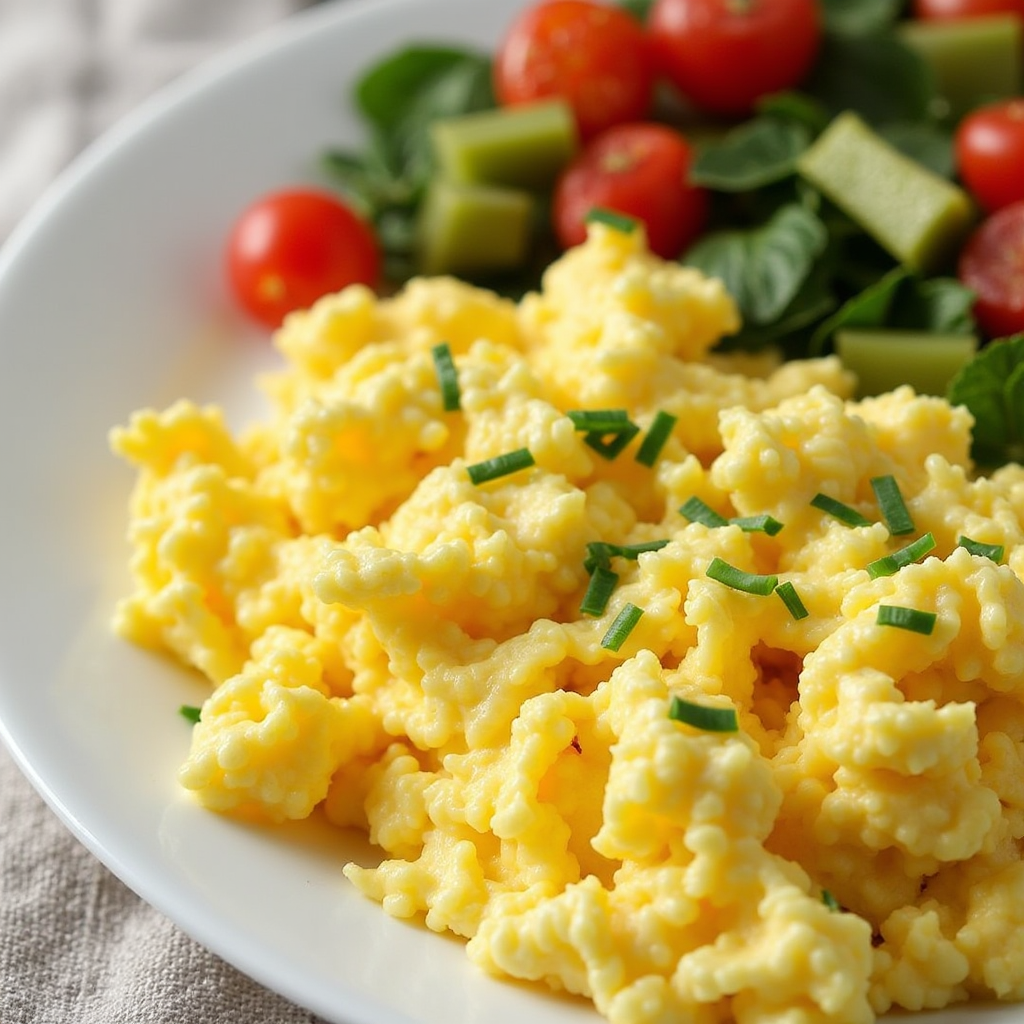Introduction
Scrambled eggs are often thought of as a protein-packed breakfast option. This article looks at how many calories are in scrambled eggs. We’ll go through their nutritional value, how to figure out their calories, and the impact of adding other ingredients. By the end, you’ll know exactly what you’re eating when you have this favorite meal.
Nutritional Profile

Scrambled eggs are popular worldwide for their health benefits. They are mainly known for their protein but also provide important vitamins and minerals. The calories in scrambled eggs come mostly from proteins, fats, and very few carbs. They also have vitamin D, B vitamins, and minerals like selenium and zinc, making them a nutritious and tasty choice for a balanced diet.
How Calories in Scrambled Eggs Are Calculated
The calorie count in scrambled eggs depends on the size of the eggs and how you cook them. One large egg has about 72 calories, mostly from fats and proteins. If you scramble an egg without extra fat or liquid, the calories stay about the same, with only small changes from cooking. Adding things like milk, butter, or oil changes the total calories. This section explains how to calculate these so you can make smart eating decisions.
Scrambled Eggs Calories Breakdown
Let’s look at what makes up the calories in scrambled eggs:
Proteins: Each egg has about 6 grams of protein, giving it 24 calories.
Fats: Most of an egg’s calories come from fats, about 5 grams, which add up to 45 calories.
Carbohydrates: Eggs have hardly any carbs, usually less than 1 gram per egg.
This breakdown shows how each part adds to the total calories, useful for those watching their nutrient intake.
Scrambled Eggs with Added Ingredients
You can make scrambled eggs richer by adding other ingredients, turning a simple dish into something more filling. Here’s how some common additions change the calories:
Cheese: Adding 30 grams of cheddar cheese increases the calories by about 120.
Milk: One tablespoon of whole milk adds roughly 9 calories.
Vegetables: Adding veggies like onions, peppers, or spinach hardly changes the calorie count but boosts the vitamins and minerals.
Adding these ingredients changes not just the taste but also the nutritional value, making scrambled eggs flexible to fit different diet needs and tastes.
Health Benefits of Scrambled Eggs

Scrambled eggs are tasty and versatile, offering several health benefits. They’re a great source of high-quality protein, important for muscle repair and growth. The protein also helps keep you full, which can help manage your appetite. Eggs are among the few foods naturally containing vitamin D, essential for bones and immune health. They also provide choline for brain health and antioxidants like lutein and zeaxanthin for eye health. With all these nutrients, the calories in scrambled eggs contribute positively to overall health.
Tips for Reducing Calories
If you’re looking to enjoy scrambled eggs but prefer to lower the calorie count, here are several effective tips:
- Use cooking spray or a non-stick pan to reduce or eliminate the need for butter or oil.
- Opt for egg whites instead of whole eggs to drastically reduce fat intake and calories.
- Incorporate low-calorie vegetables like spinach, tomatoes, or mushrooms to add volume and nutrients without significantly increasing calories.
- Choose low-fat or fat-free dairy additions, or use alternatives like almond milk for mixing the eggs.
These strategies allow you to enjoy scrambled eggs while managing the calorie content, making them suitable even for calorie-restricted diets.
Scrambled Eggs for Weight Loss
Incorporating scrambled eggs into a weight loss diet can be highly effective. The high protein content increases satiety, which can reduce overall calorie intake by keeping you full longer. Here’s how scrambled eggs can be optimized for weight loss:

- Prepare them with minimal added fats.
- Serve with a side of fiber-rich vegetables to enhance fullness and increase nutrient intake.
- Use them as a base to add lean proteins or other low-calorie ingredients that enhance the dish without adding excessive calories.
With these adjustments, scrambled eggs become a powerful tool in a weight management diet, providing essential nutrients while helping maintain a calorie deficit.
FAQs
- How many calories are in 2 scrambled eggs? Two scrambled eggs contain about 144 calories when cooked without adding any extra ingredients like milk or butter.
- How many calories are in 2 scrambled eggs with no milk? When you prepare 2 scrambled eggs without milk, the calorie count remains approximately 144 calories, provided no other ingredients such as butter or oil are added.
- Is 2 scrambled eggs healthy? Yes, two scrambled eggs are healthy as they provide a good source of high-quality protein, vitamins like B12 and D, and minerals such as selenium and phosphorus. Moreover, they support muscle maintenance and overall health.
- How many calories are in a single scrambled egg? A single scrambled egg contains roughly 72 calories if cooked without additional fats or liquids. This makes it a low-calorie option that’s also rich in nutrients.
Conclusion
Scrambled eggs are a nutritious dish that, beyond just being a source of protein and other nutrients, offer flexibility in any diet whether the goal is weight maintenance, muscle gain, or weight loss. Understanding the calories in scrambled eggs and how to manipulate them can help integrate this food into your diet effectively. By appreciating both their health benefits and their versatility in calorie adjustment, scrambled eggs can be enjoyed in countless ways, aligning with various dietary goals and preferences. Whether you keep them simple or jazz them up, scrambled eggs remain a staple in a health-conscious kitchen.

